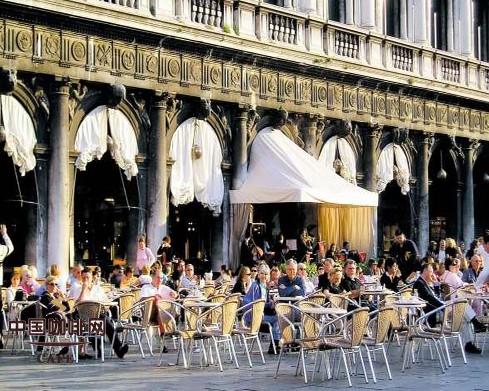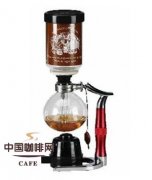The development process of coffee fruit Vienna's "coffee center"

On Barcelona's Montsio Street, I found the Four Cats Cafe, where tourists stopped at the entrance to examine the cafe's small front door and Ramon Casas poster, and a middle-aged woman guided them to their seats, giving a very brief history of the cafe.
Many tourists come for Picasso. Picasso held his first exhibition at the cafe in 1899 at the age of 17, and his paintings were used as menu covers. In fact, the café was more closely related to Ramón Casas, a painter who had studied painting in Paris and came from a wealthy family who wanted to set up his own meeting place in Barcelona, along the lines of Le Chat Noir in Paris. His business partner was Pere Romeu, who had worked as a waiter at Le Chat Noir and wanted to set up a good pub with affordable food and good music. Paris's "Black Cat" closed in 1897, before Picasso went there to see it, but Paris Montmartre, a bohemian tavern, was inherited in Barcelona. The "Four Cats" opened in June of that year. In addition to coffee, wine and food, Romeau believed that there was also a "spiritual element" here. His artist friends often sat together to discuss problems. In Spanish,"four cats" means three or five people. There have been architects such as Gaudi and musicians such as Isaac Albernis, but three or five friends may not be able to keep a pub running. Six years later,"four cats" are closed. Now reopened in 1978, the shop offers visitors a drink and a rest.
In Spanish, there are three main types of coffee: café solo is black coffee, café cortado is a little milk, café conleche is a lot of milk (Italian latte means milk), this is the origin of the so-called latte. But coffee with milk was not invented by an Italian or a Spaniard, but by a Viennese named Jerzy Franciszek Kulczycki, who was a war hero in the war against the Turkish Empire in 1683 and was rewarded by the city council with money and a house, as well as a large amount of coffee seized from the Turkish army, so that he opened a cafe after the war, which means "Blue Bottle Cafe" in English. He dressed himself in Turkish costume and mixed milk with coffee, boasting to his customers that although we had learned to drink this dark stuff from the Turks, they had no idea it could be mixed with milk. The Blue Bottle, which opened in 1686, must have been one of the first cafes in Europe. The cafe closed in 1694 after Kurkiski died, but he was still regarded as a hero by Viennese. There was a Kurkiski Festival every October. Viennese cafe owners would paste his portrait on the windows. Vienna now has a street named Kurkiski. There is a statue of him on the corner. I looked up Blue Bottle Cafe online in Vienna and found that an American businessman registered the name in 2002 and opened his store from California to New York, which may be the next Starbucks chain.
Vienna is said to have more than 600 cafes, several of which are famous, such as Sacher, Sperl, Hawelka, etc., but tourists prefer to go to Café Central, which has the most stories.
Enter the café and you are confronted with a statue of Adenberg, sitting in a chair with his hand on the coffee table. This writer wrote in this café, met Schnitzler, was recognized, and went to literature. However, today people are not familiar with his work, but most people know the slogan-"I am not at home, I am in the café; if not in the café, I am on my way to the café." This sentence was originally a relationship between people and "coffee center", but it gradually evolved into a teacher's self-description of Adenberg. If there are any literary-sounding cafes in the world that are willing to put a small blackboard in front of the door and write a literary-sounding famous saying, then Adenberg is the initiator. He once wrote: "If you are depressed, whatever it is, go to the cafe!" You get only 400 kroner, but you're willing to spend 500 to go to a cafe! You hate the people around you and despise them, but you can't lack them. Go to the cafe!"
Important Notice :
前街咖啡 FrontStreet Coffee has moved to new addredd:
FrontStreet Coffee Address: 315,Donghua East Road,GuangZhou
Tel:020 38364473
- Prev

The flowering aroma of coffee fruit the source of real caffeine aroma.
In a coffee obsession like mine, there is no smell comparable to the smell in the coffee field during the flowering period. The first flowering period of the coffee tree is about three years. The white flowers are five-petal tube-shaped flowers, with a faint fragrance of jasmine, and the inflorescences are arranged in dense clusters. It will wither after two or three days of flowering and begin to bear fruit after a few months. In Yunnan, this is the right time.
- Next

The Secrets of the Coffee Pot
After grinding the beans, choose a suitable coffee pot to make the taste you like. The French filter coffee maker is relatively the simplest and lightest one, using a filter to filter out the coffee grounds cleanly to get a crisp quality coffee. The French coffee pot is easy to operate and can be pressed and brewed with the fine coffee powder ground by the graphite bean grinder.
Related
- Beginners will see the "Coffee pull flower" guide!
- What is the difference between ice blog purified milk and ordinary milk coffee?
- Why is the Philippines the largest producer of crops in Liberia?
- For coffee extraction, should the fine powder be retained?
- How does extracted espresso fill pressed powder? How much strength does it take to press the powder?
- How to make jasmine cold extract coffee? Is the jasmine + latte good?
- Will this little toy really make the coffee taste better? How does Lily Drip affect coffee extraction?
- Will the action of slapping the filter cup also affect coffee extraction?
- What's the difference between powder-to-water ratio and powder-to-liquid ratio?
- What is the Ethiopian local species? What does it have to do with Heirloom native species?

